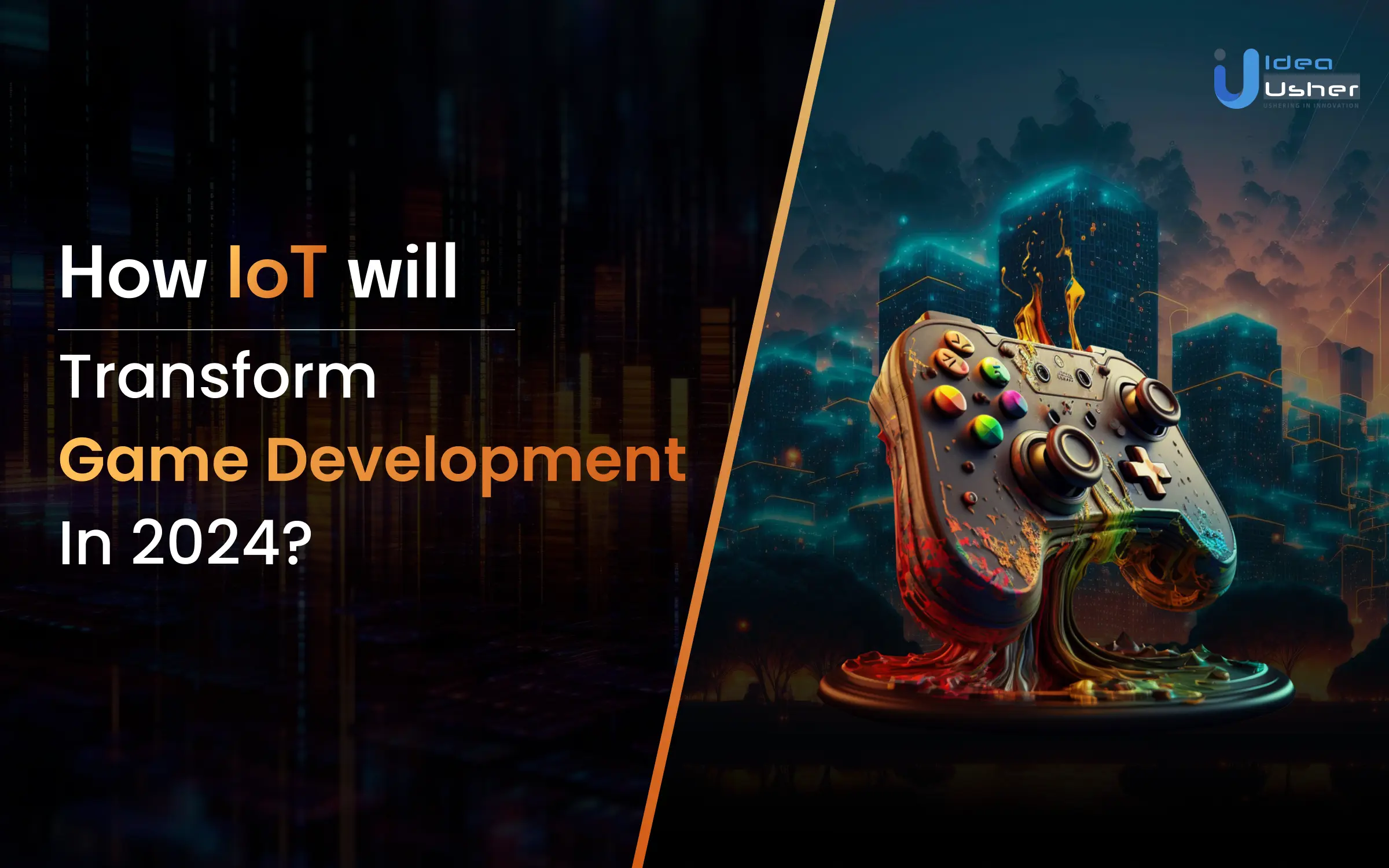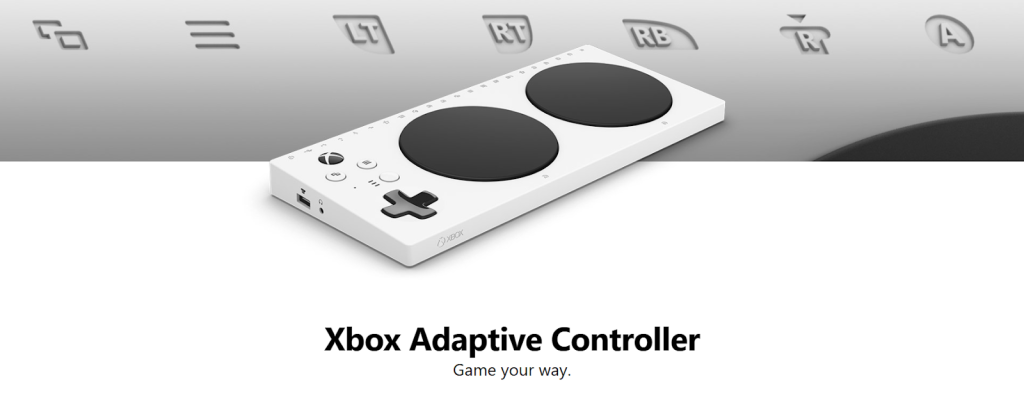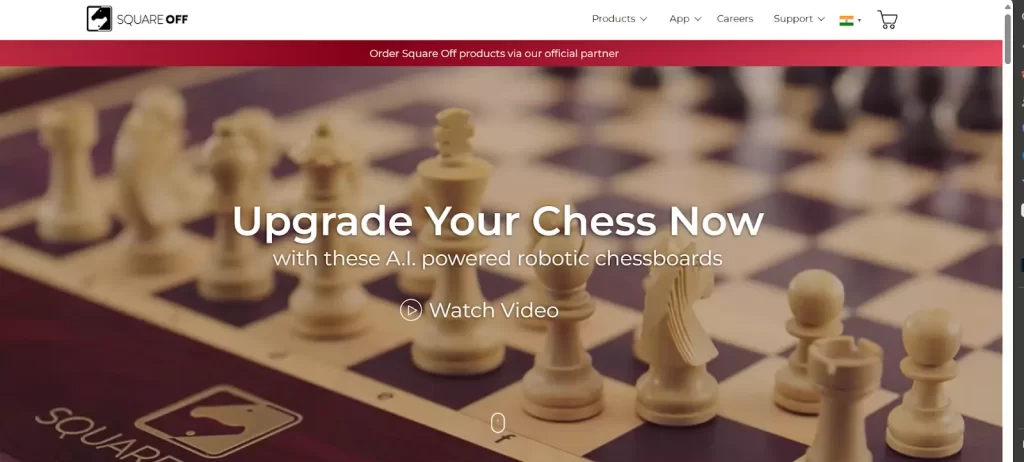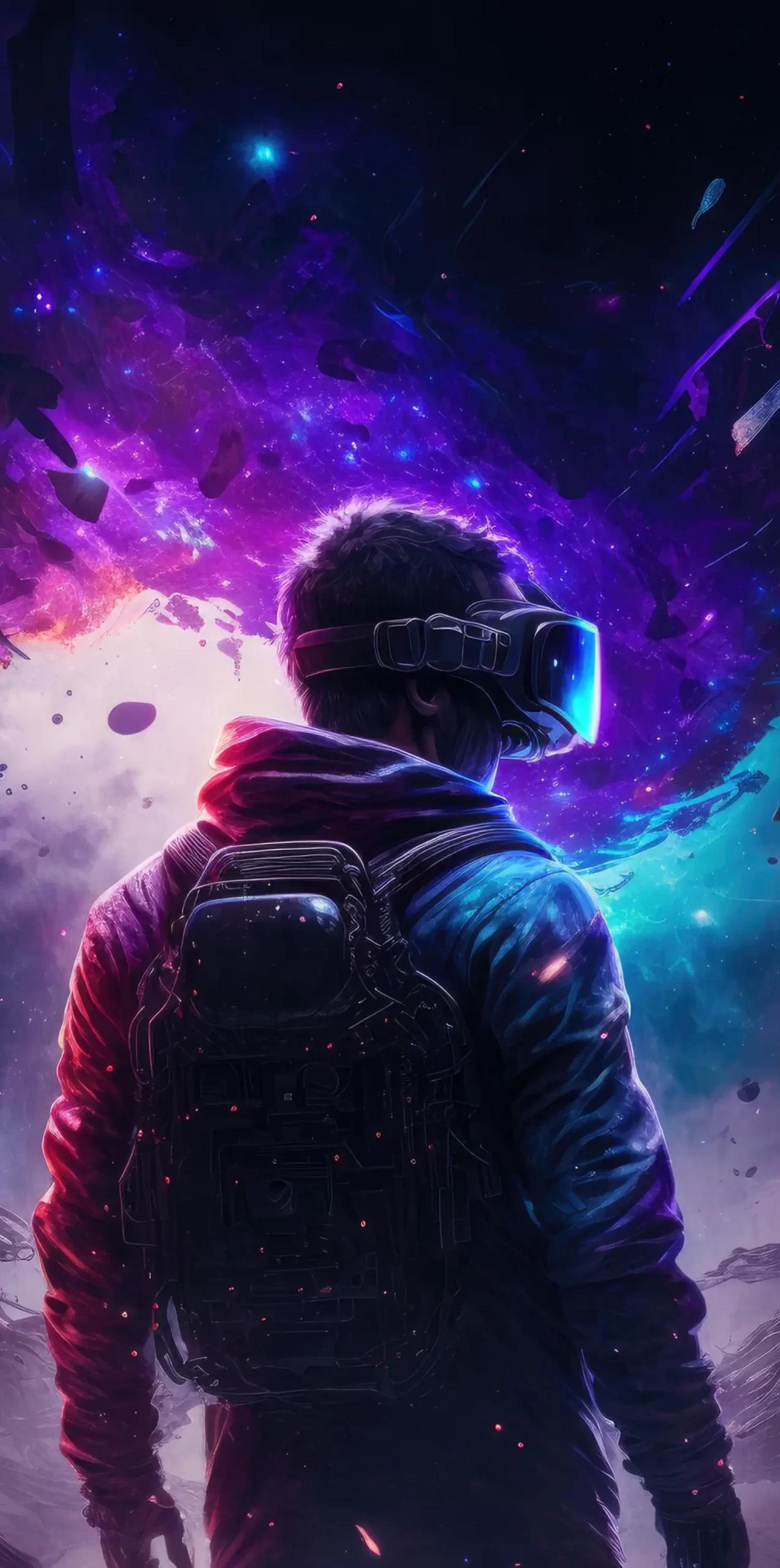
The Internet of Things (IoT) rapidly changes how games are made and played. With IoT, game developers and players can now build, maintain, and share virtual worlds that were never possible before.
IoT in the gaming industry is getting more popular, used by big companies and independent developers alike to create exciting gaming experiences.
Given the transformative potential of IoT in gaming, numerous companies are making substantial investments to harness this technology innovatively.
This article will delve into how the Internet of Things enhances gaming experiences. But before delving into that discussion, let’s examine some noteworthy statistics reflecting the transformative impact of IoT in the gaming industry.
- Gaming Industry Statistics
- What Is The Internet Of Things?
- Advantages Of IoT In Gaming
- Impact Of IoT On The Gaming Industry
- Challenges Of IoT In The Gaming Industry
- Technology Requirement For IoT-Based Game Development
- 1. AI & Machine Learning
- 2. Cloud Computing
- 3. Data Analytics
- Top 5 Examples Of IoT In Gaming
- Tech Stack To Consider To Develop A Game Based On IoT Technology
Conclusion- FAQ
Gaming Industry Statistics

Source: Statista
Here are some more interesting statistics about the gaming industry:
- Video games are played by around 3.26 billion people globally.
- Digital sales comprise 89.5% of all video game sales.
- Free-to-play games provide for around 85% of all gaming income.
- By 2025, the PC gaming industry will have collected 46.7 billion US dollars.
- People between 18 and 34 comprise 38% of all gamer’s worldwide.
- The mobile gaming business will be worth 138 billion US dollars by 2025.
- Free-to-play games generate around 85% of total income in the digital gaming business.
The gaming industry’s market expansion represents a profitable potential for investment, and the industry’s sustained growth will provide a favorable environment for those looking to make a profit from the booming gaming sector. Investing in this dynamic and ever-changing business has the potential to bring in big profits and long-term success.
What Is The Internet Of Things?
The Internet of Things (IoT) refers to a network of interconnected devices, objects, and systems that communicate through the Internet. These devices are embedded with sensors, software, and other technologies that enable them to collect and exchange data, creating a seamless and interconnected web of physical objects. IoT has found applications in various industries, transforming the way we live and work by enabling smart homes, efficient industrial processes, and advanced healthcare systems.
Also, IoT plays a pivotal role in enhancing the gaming experience. By integrating IoT technologies, game developers can create more immersive and personalized gaming environments. IoT-enabled devices, such as wearables and sensors, capture real-time data related to player movements, preferences, and interactions. This data is then leveraged to tailor the gaming experience to individual users, offering a more dynamic and engaging gameplay.
For example, motion controllers connected through IoT can enable gesture-based controls, providing users a unique and interactive way to navigate and interact with the virtual world.
Additionally, IoT analytics tools provide valuable insights into gamer behavior, allowing developers to make data-driven decisions to improve game mechanics, optimize server performance, and create more enjoyable gaming experiences.
Advantages Of IoT In Gaming
The integration of Internet of Things (IoT) technology into gaming brings advantages that redefine how players engage with digital entertainment. Here are some benefits of IoT in gaming:
1. Increased User Engagement
The large boost in user engagement that results from integrating the Internet of Things (IoT) into gaming is one of the major benefits. Developers are able to get real-time data about player behavior, preferences, and interactions with the help of IoT-enabled devices like wearables and sensors. When utilized wisely, this data makes it possible to create customized game experiences.
Game makers may keep players more interested and invested in the virtual worlds they explore by customizing gameplay according to personal tastes. IoT delivers a more dynamic and responsive gaming experience, which increases player engagement. This can be achieved through interactive components that react to real-world behaviors, adjustable difficulty levels, or personalized stories.
2. Enhanced Game Development
IoT significantly contributes to enhanced game development processes. Developers can leverage IoT technologies to create innovative gameplay mechanics and introduce engaging features. For instance, IoT-enabled sensors can be used to incorporate real-world elements into the game, making it more interactive and dynamic.
Additionally, the interconnected nature of IoT allows for the seamless integration of multiplayer functionalities, fostering collaborative gaming experiences. By embracing IoT, developers gain access to a diverse range of tools and capabilities, paving the way for more creative and sophisticated game designs. This not only enriches the gaming experience but also positions game developers at the forefront of technological advancements in the industry.
3. Real-Time Analytics
One key benefit of IoT in gaming is real-time analytics. IoT-enabled devices produce a steady stream of data that gives developers instant access to information on player behavior and in-game dynamics. This real-time data may be utilized to spot problem areas, make quick changes to the game’s settings, and make well-informed judgments. Developers are able to keep an eye on player involvement, track popular game features, and quickly adjust to shifting patterns.
Real-time data analysis makes game production more dynamic and responsive, which keeps games interesting and relevant in the always changing gaming market.
4. Immersive Gaming Experience
In order to provide a more immersive game experience, IoT is essential. Virtual reality (VR) headsets and motion controllers are examples of connected technologies that increase the realism of gaming. The synchronization of in-game activities with real-world motions is made possible by IoT, which improves the ease of use and engagement of gaming.
For example, IoT-powered VR games may immerse players in virtual environments where their actions have a direct impact on the game’s environment. As a result, gamers are able to feel more fully immersed in the virtual world, which ultimately raises the level of enjoyment and impact of the gaming experience.
Impact Of IoT On The Gaming Industry
From enhancing gaming experiences with IoT-enabled devices to leveraging data for development and marketing, the impact on the gaming landscape is found in various ways.
1. Realistic Gaming Experience By Using IoT-Enabled Devices
The development of more realistic and engaging gaming experiences is the most obvious way that IoT is influencing the gaming industry. Wearables and motion sensors are two examples of IoT-enabled gadgets that enhance realism by integrating real-world data into virtual worlds. For example, users may translate real-world movements into in-game activities by imitating them using motion controllers connected to the Internet of Things.
This degree of interaction dissolves the boundaries between the virtual and real worlds, improving the game experience overall and fostering a stronger sense of presence. As IoT develops, we may anticipate increasingly more advanced gadgets that will provide previously unheard-of degrees of realism by further bridging the gap between reality and game.
2. Allows Developers To Create Innovative Games
Connecting actual gadgets to the internet creates new opportunities for gaming mechanics and storylines. IoT-enabled sensors provide developers with the opportunity to incorporate novel gameplay aspects that react to real-world inputs.
For example, the gaming experience may become dynamic and adaptable by incorporating surrounding variables recorded by Internet of Things (IoT) sensors into in-game settings. This merging of the virtual and real worlds promotes an innovative and creative culture among game developers by enabling the exploration of new ideas and gameplay techniques.
3. Useful Data Extraction
The incorporation of IoT in the gaming business creates an abundance of data that is extremely valuable for both game development and marketing efforts. Data gathered from player interactions, preferences, and in-game behaviors offers developers with information that may be used to refine and optimize game dynamics.
This data-driven strategy guarantees that games are customized to fit the expectations of players, resulting in more engaging and entertaining experiences.
Understanding player demographics and behavior enables game developers to design targeted marketing efforts that reach the appropriate audience with the appropriate material.
Challenges Of IoT In The Gaming Industry
Along with the advancements, several challenges have emerged that impact IoT’s seamless adoption and operation in gaming.
1. High Degree Of Connectivity Requirement
The integration of Internet of Things (IoT) devices in the gaming industry demands a high degree of connectivity to ensure seamless interactions and real-time communication between devices. This challenge is particularly seen in multiplayer and online gaming scenarios where low latency and high bandwidth are crucial.
As the number of connected devices increases, maintaining a consistently high level of connectivity becomes more complex. Developers need to implement robust networking solutions and leverage technologies such as edge computing to reduce latency, ensuring a smooth gaming experience for users. Additionally, optimizing protocols and communication pathways is essential to address the challenges posed by the increased demand for connectivity in IoT-enabled gaming environments.
2. Security of Networked Devices
The security of networked devices poses a significant challenge in the IoT-driven gaming landscape. With an expanding attack surface due to the proliferation of interconnected devices, the gaming industry becomes susceptible to various cybersecurity threats.
Malicious parties may exploit vulnerabilities in IoT devices, leading to unauthorized access, data breaches, or even the compromise of gaming experiences. To address this challenge, game developers and IoT device manufacturers must prioritize security measures such as encryption, secure authentication mechanisms, and regular software updates. Implementing robust intrusion detection systems and staying vigilant against emerging threats is essential to safeguard the integrity and privacy of both players and their gaming environments.
3. Managing Massive Data Associated With IoT Devices
The influx of data generated by IoT devices in the gaming industry presents a considerable management challenge. Each connected device continuously produces data related to player behavior, preferences, and in-game interactions. Effectively handling this massive volume of data requires scalable and efficient data management solutions.
Cloud-based storage and processing technologies can be leveraged to store and analyze the vast datasets generated by IoT devices. Implementing data compression techniques, edge computing, and employing machine learning algorithms for real-time data analysis are essential strategies to manage and derive meaningful insights from the substantial data streams associated with IoT devices in the gaming ecosystem. Developers must also consider data privacy regulations and implement measures to protect user information while extracting valuable intelligence to enhance the gaming experience.
Technology Requirement For IoT-Based Game Development
The development of games based on IoT demands a sophisticated integration of technologies to deliver seamless, scalable, and immersive experiences for players, each playing a pivotal role in shaping the future of cloud-based gaming.
1. AI & Machine Learning
The integration of Artificial Intelligence (AI) and Machine Learning (ML) plays a pivotal role in the development of IoT based games. AI can enhance player experiences by creating dynamic and adaptive game environments. Machine Learning algorithms can be employed to analyze player behavior, preferences, and skill levels, allowing for personalized gaming experiences and intelligent matchmaking.
Additionally, AI-driven NPCs (Non-Player Characters) can provide more realistic and challenging interactions, adapting to individual player strategies. Cloud-based AI services, such as those offered by major cloud providers, enable developers to harness the power of machine learning models without the need for extensive local processing power, contributing to the scalability and efficiency of IoT based gaming platforms.
2. Cloud Computing
Cloud computing is the backbone of IoT based gaming, providing the necessary infrastructure for hosting and delivering games to players over the internet. The technology enables scalable and flexible solutions, allowing game developers to allocate resources dynamically based on demand. Developers can access virtual machines, storage, and networking resources through Infrastructure as a Service (IaaS) and Platform as a Service (PaaS) offerings from cloud service providers.
This streamlines game development and deployment and ensures that players can access the game from various devices without the need for high-end local hardware. Cloud computing’s ability to handle variable workloads and distribute resources efficiently is fundamental to the success of cloud gaming.
3. Data Analytics
Data analytics is crucial for understanding player behavior, optimizing game performance, and making informed decisions in IoT game development. By leveraging cloud-based data analytics tools and services, developers can gather insights from vast datasets generated by player interactions. Analyzing gameplay patterns, preferences, and in-game metrics enables developers to enhance game features, identify areas for improvement, and tailor content to specific player segments.
Hardware Requirements For IoT-based Gaming
In addition to software prerequisites, the development of IoT-based games necessitates careful consideration of hardware requirements. This encompasses various devices, including wearables, sensors, and gaming consoles.
For example, wearables serve as instruments to monitor user activities, capturing data such as steps taken and other relevant parameters. The utilization of this data enables the crafting of an immersive gaming encounter tailored to individual users.
Similarly, sensors play a crucial role by tracking both user movements and environmental conditions. Leveraging this data enhances the creation of lifelike gaming scenarios where in-game dynamics constantly evolve based on the collected data.
Furthermore, gaming consoles contribute to the development of more interactive and captivating experiences. These devices have the capacity to facilitate the creation of virtual reality (VR) encounters, surpassing the immersion levels offered by traditional gaming setups.
Top 5 Examples Of IoT In Gaming
The integration of the Internet of Things (IoT) into the gaming landscape has revolutionized the industry, introducing innovative experiences that bridge the gap between the virtual and physical worlds. Here are some examples of IoT in gaming:
1. Pokemon GO

Pokemon GO, a popular smartphone game, uses IoT technologies such as GPS and augmented reality to allow players to explore the real environment and capture virtual Pokemon. The success of the game may be attributed to the seamless integration of IoT, which allows for location-based gaming and real-time interaction with the environment.
2. Disney Infinity

A gaming platform that combines physical toys with virtual gameplay, leverages IoT technology. Players can place physical character figurines on a sensor pad, and the corresponding characters come to life in the virtual game world. This seamless interaction between the physical and digital realms showcases the potential of IoT in enhancing gaming experiences.
3. Microsoft Xbox Adaptive Controller

A prime example of IoT in gaming is the Xbox Adaptive Controller, which offers a flexible and adaptable interface to accommodate gamers with varying levels of mobility. For those with limitations, the controller’s IoT connectivity allows it to interface with a variety of peripherals and provide a customized gaming experience.
4. Square Off

Square Off is IoT-enabled smart chess boards that utilize robotic technology to move chess pieces on a physical board in response to the moves made in a digital game. This merging of the physical and virtual realms enhances the traditional chess experience by adding a dynamic and interactive element.
5. Niantic’s Ingress

Players in this game can group together, share resources, and explore strange worlds. The platform offers wearable gaming experiences that utilize IoT through wearable devices like smartwatches. Players receive real-time notifications and updates on their wearables, enhancing the accessibility and portability of the gaming experience while promoting an active and dynamic gameplay environment.
Tech Stack To Consider To Develop A Game Based On IoT Technology
Building a game based on IoT technology requires a robust technical stack to handle the integration of hardware, software, and connectivity. A comprehensive tech stack for IoT game development may include:
1. Programming Languages
- C# or C++
- Python
- JavaScript
2. Game Development Engines
- Unity3D
- Unreal Engine
3. IoT Hardware Platforms
- Arduino
- Raspberry Pi
4. Communication Protocols
- Message Queuing Telemetry Transport
- Constrained Application Protocol
5. Cloud Services
- AWS (Amazon Web Services) IoT Core
- Microsoft Azure IoT Hub
6. Database
- NoSQL databases
- SQL databases
7. Networking
- WebSocket
- RESTful APIs
8. Security
- TLS/SSL
- OAuth 2.0
9. Analytics and Version Control
- Google Analytics
- Git
Conclusion
The use of IoT in the gaming industry has transformed how games are made, promoted, and consumed. It has enabled businesses to adopt an agile game development approach while improving user experience through real-time feedback and analytics.
IoT in gaming is also changing how developers collect data from their gamers, allowing them to make informed decisions about best adapting to their player base.
Companies can maintain their competitiveness and keep ensuring of an engaging entertainment experience for players all around the world by using loT technology in game development.
Developers must include loT in their game development approach to keep ahead of the competition.
With its potential yet largely unexplored, this is a great time for businesses to investigate the possibilities of loT in gaming and learn how it might help them maximize earnings.
Choose Idea Usher as your game development service provider. With a commitment to providing quality and a proven ability to navigate the complexities of IoT environments, our company emerges as a trusted partner to help you achieve your business goals.
Our team delivers customized solutions aimed at prioritizing the success of your organization by prioritizing client requirements, maintaining rigorous security measures, and demonstrating proficiency in IoT technology.
Contact us today to discover how our game development service can help your company reach new heights along with the integration of IoT technology.
FAQ
Q. What is the Internet of Things?
A. The Internet of Things (IoT) refers to a network of interconnected devices, equipped with sensors and communication technologies, enabling them to collect, exchange data, and connect to the internet. This connectivity allows for seamless communication and data exchange between physical objects, contributing to a smarter and more interconnected world.
Q. What are the benefits of developing an IoT-based game?
A. Developing an IoT-based game offers enhanced player engagement through real-world interactions and personalized experiences, leveraging interconnected devices to create dynamic and immersive gameplay. The integration of IoT technologies also provides developers with valuable data insights, allowing for continuous refinement of game mechanics and the ability to stay at the forefront of technological advancements in the gaming industry.
Q. What technology advancements should developers consider for IoT-based games?
A. Developers should prioritize advancements in Edge Computing for real-time processing and 5G connectivity to ensure low-latency communication, enhancing the performance and responsiveness of IoT-based games.
Q. How much does it cost to develop an IoT-based game?
A. The cost to develop an IoT-based game can vary widely, depending on factors such as complexity, features, and development team expertise. It is advisable to consult with experienced developers to get a precise estimate tailored to the specific requirements of the project.
Q. What types of games can I create with IoT?
A. With IoT, you can create a diverse range of games, including location-based augmented reality experiences, interactive smart board games, and wearable gaming adventures, leveraging real-world data to enhance player engagement and immersion. The integration of IoT opens up innovative possibilities across genres, from fitness and simulation to strategy and social gaming.










Gaurav Patil